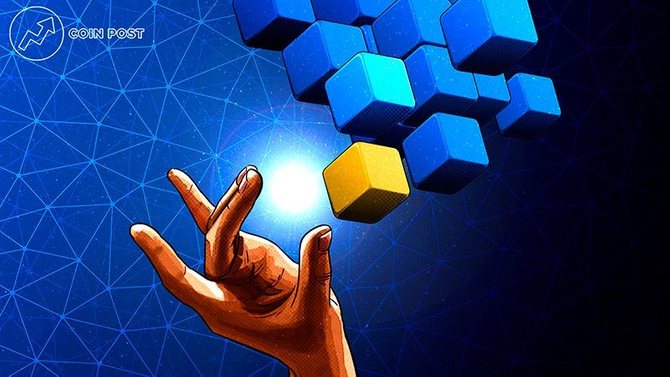

What is a smart contract. History of origin and development. How smart contracts work. Smart contracts of Ethereum and other platforms.
5 years ago


Despite the fact that it has already passed more than ten years since the advent of technology which is called blockchain, only a small part of humanity knows about it. And that is mainly due to the spread of information about bitcoin and several other popular cryptocurrencies.
But in fact, the blockchain invention is not inferior in importance to the advent of computers and the Internet. And this technology can be widely used not only in payment industry, but also in many others. But for this as many people as possible should to get hang of it, at least in general terms.
Blockchain is unbroken chain of chronologically interconnected blocks, built according to certain cryptographic rules.

Most frequently blockchain technology is associated with cryptocurrency transaction networks, the first of which was bitcoin. The blocks of such systems are stored a consistent history of all transactions ever made.
Collectively, this information constitutes constantly updated database according to the rules of consensus, copies of which are stored on the equipment of many participants in a distributed network. Such devices are called nodes and constitute an internet-connected computers or servers with specialized software.
The main advantages of classic blockchain systems are:
In blockchains running on PoW algorithm (Proof-of-Work), miners are responsible for maintaining network stability. They are engaged in confirming and adding transactions in new blocks, receiving cryptocurrency reward for their work. It is an analogue of the network internal “money”, that is, used to accumulate and transfer values. Examples of such networks and their internal coins are Bitcoin (BTC), Litecoin (LTC), Ethereum (ETH), etc.
Besides transactions each block contains a heading with its creation date, two hashes (its own and from previous block), size, service information and the string “nonce”, for finding an arbitrary value of which miners compete among themselves.

As known, the main use of blockchain is cryptocurrencies. Payment systems based on this technology offer a solution to such important problems of the financial industry, as data protection, confidentiality and the speed of funds transfer, herewith eliminating intermediaries represented by banking and government structures.
However, there are such blockchain projects, which instead of offering alternative payment solutions, seek to cooperate with banking systems, improving their existing structure. For example, the company Ripple with its cryptocurrency XRP and the RippleNet network, offering fast and cheap transactions.
In addition, many large banks and payment systems are working on creating their own blockchain-based platforms.
In fact, these technologies can be used in almost every existing area of human activity, significantly simplifying and improving them.

In most developed countries, work with documents has long been converted to electronic format. However, this did not help to get rid of such classic document management shortcomings as the possibility of fake or loss/destruction.
In its turn blockchain technologies offer immutability, transparency and distributed data storage to solve these and many other problems. In addition, the blockchain has such important tools for working with documents as private and public keys, which are analogues of electronic signatures.
Some countries have already started to shift to the practices of transferring document management to the blockchain. For example, the UAE is going to do this completely by 2020.
The use of blockchain technology in this industry allows you to track in detail goods from producer to buyer and guarantee its authenticity, speeds up the passage of the supply chain, and also significantly reduces the bureaucratic chain of accompanying procedures.
The technology giant IBM has already started using blockchain in transportation. BlockArray and OpenPort also offer commercial solutions based on this technology.
The problem of fair elections is eternally present in all, even the most democratic countries. With the help of blockchain technologies, you can radically change the voting system, because there is no need for polling stations, bulletins and a huge number of people serving this process.
All you need to participate in blockchain-based voting is a device with internet access and a unique voter identifier for authorization in the system. All voting results recorded on the blockchain accessible to viewing by any outside observer. Meanwhile voter confidentiality and the impossibility of making any changes are applied.

Using such blockchain tools, as smart contracts can greatly simplify and, in fact, automate many processes in the insurance industry. As a result, the influence of the human factor is excluded, which leads to a reduction in the staff of insurance companies and significantly accelerate the processing of customer requests.
Actually active blockchain-based solutions are already offered by Etherisc (insurance of air transportation and agricultural activity), SafeShare (real estate) and InsureX (health and life).
Blockchain technology can also be useful and already partially applied in healthcare, real estate, transport systems, biometrics, intellectual property rights tracking systems, notarial services, energy markets and many other industries.

An event during which dramatic changes are made to the blockchain code, leading to its branching into two incompatible chains, calles hard fork.
If we are talking about the hard fork of a cryptocurrency, dividing the network into two versions may result in the following scenarios:
The main reason for conducting hard forks is improving the blockchain from a technical point of view (improved scalability, changing mining rules, etc.). However, there are also initially targeted at creating your own cryptocurrency in order to obtain financial benefits. There may also be special cases like the need to kickback the network to a previous state, as it was, for example, with Ethereum in 2016 (Ethereum Classic appeared).
The largest number of hard forks, as a result of which new independent blockchains appeared, was conducted on the bitcoin network. The most significant of them:
As a rule, if the separation of the blockchain leads to the emergence of a new cryptocurrency, old chain wallet owners receive new coins in accordance with their balances at the time of the hard fork.

In the case of cryptocurrencies, the hash function works according to the rules of a particular algorithm, for example, for bitcoin it is SHA-256, where 256 is the bit rate of the output data.
The hash of each block is formed on the basis of all transactions contained in it in the Merkle tree form, as well as the hash of the previous block, acting as a link (pointer) within a sequence. Thus, using hashes, the general state of the blockchain is expressed as one standardized alphanumeric sequence, which, in fact, contains the entire previous history of transactions and blocks in encrypted form.
Thanks to hashing, the irreversibility of the chain recorded in the blockchain is achieved. It works like this: if you make changes in any of an accomplished transactions, this will entail a fundamental change hashes of all subsequent network elements (аvalanche effect), which will automatically entail the assignment of invalid status. It turns out that it is impossible to implement fraudulent activities in the already recorded history of the blockchain so that no one will notice it.
In addition, the hash function in the blockchain has the following properties:
Together, all these features allow hash functions provide reliable data protection against changes stored in the blockchain

Tokens are not cryptocurrencies, and act as asset accounting units, issued by private organizations in digital distributed networks. In essence, they are more similar to securities than to money.
As a rule, token management is carried out through the smart contract used for its release. It also contains token balances in its holders’ wallets. Interaction with cryptocurrency tokens is possible via the basic tools to access their main blockchain, and through decentralized applications for which they were created.
TRON, Waves, EOS, NEM, Nxt, and a number of other lesser-known blockchains also have a similar opportunity.
All tokens issued on the blockchain are divided into two types:
Token value, particularly used for ICOs, is a reflection of the level of trust of their holders in the project, who made the issue. Further its value is determined by the accepted rules of the cryptocurrency market, that is based on existing supply and demand, unless other conditions not specified by the issuer.

A transaction is a a data fragment signed by a digital signature and sent to the blockchain, which after processing the network becomes part of the contents of the new block.
Usually, the main purpose of executing transactions is the reallocation of funds between the balances of accounts existing in the network (wallets, addresses). But there are other that are used to create smart contracts and its subsequent launch in networks where it is provided (Ethereum, TRON, etc.).
To create a transaction, wallet apps are used that are implemented in the form of web, desktop or mobile software. Direct transfer of funds from any address is possible only if the user has the corresponding private key.
Adding transactions to blocks occurs after validation by eligible network members (miners, nodes). Usually the speed of this process depends on the size of the commission deductions.
Since most blockchains are transparent, the content of transactions occurring within them is publicly available and can be viewed via special web services – block explorers. The oldest and most popular of them is the site Blockchain.info, launched in 2011. This explorer is currently available at Blockchain.com and supports Bitcoin, Ethereum and Bitcoin Cash networks.
Checking transactions via Blockchain.info is carried out by entering their hashes in the search string presented on all its pages.

As a result, the user gets access to the entire contents of the required transaction: number of transferred coins, date of its conducting, sender and receiver addresses, processing status by its network, commission to miners and various service information:

As you can see, blockchain is a rather interesting and useful technology, familiarization with which you can start with its most common embodiment – cryptocurrencies. The bonus in this case will be an opportunity to join to the financial freedom community and, as a result, become a little wealthier.